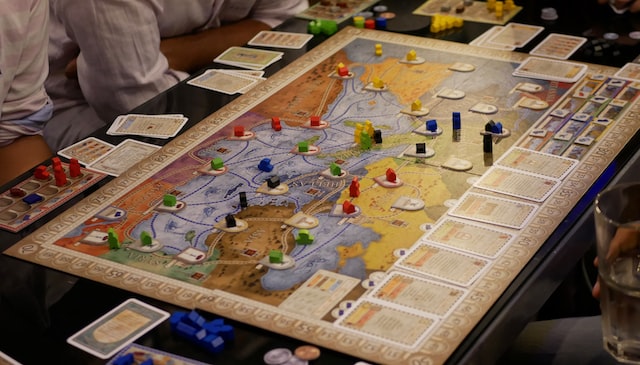Playing an interactive board game aims to improve social relationships and happiness. In addition to increasing social relationships, playing interactive board games will help people connect to others and something larger than themselves. Many studies have shown that video games can help people wake up and achieve goals. So, why do people love playing video games?
Cooperative board games resulted in more conversation
The cooperative board game phenomenon has become popular in the hobby tabletop industry. In this genre, players team up against the AI in a game and work together to win. In cooperative board games, players discuss and enact the moves of the AI. Unfortunately, this cooperative strategy often involves failure. Moreover, most cooperative games only have one victory condition, so a player loses if more than one condition is met.
In addition to being a great way to promote teamwork, cooperative board games also foster a friendly relationship between players. Kids adjust their willingness to cooperate based on feedback from the game, and in this way, more conversation is likely to result in a win-win situation. Among the benefits of cooperative board games, these games have a more developmental fit for young children than competitive ones. Therefore, parents and educators may consider cooperative games when choosing a game for their kids.
Conflicts can be mapped
Interactive board games can help teach students the causes, dynamics, and consequences of conflicts. Some games, like Mission Z, include five populations attempting to secure their future. Participants must use diplomatic tactics and unconventional weapons to achieve their goals. The actions of one population may have unintended consequences for others. Such games can also help teach students how to avoid or minimize conflict. And if the students enjoy playing the games, they may even find themselves interested in taking up conflict management training.
Another helpful exercise is to map conflicts. A game can help teams identify past challenges and smooth them over. Players can also use the inventory to predict what will happen when two teams clash. It’s a way to promote honest self-reflection and better communication. In addition, it can help students understand how important the issue is to the organization. The more they understand and appreciate conflict, the better prepared they will be for it.
Empathetic connection
Interactive board games can teach students how to develop empathy. The game Empower Empathy aims to teach students how to develop empathy through cooperation. Developed by Tina Wong and Amy Liang, two former college friends who now live three miles apart, the game teaches the four principles of empathy. The players are asked to personalize the emotion of others by mimicking their facial expressions. An accompanying guidebook helps players learn how to develop empathy in themselves.
The game can also help students deepen their understanding of certain topics. For example, empathy games can be designed to focus on systemic poverty, mental illness, and a variety of other topics. While they are often designed for entertainment, they can also be adapted for classroom use. But to be effective, they must go beyond “pity tourism” and be supported by the curriculum. Interactive board games must move beyond “pity tourism” and be a valuable educational tool to achieve this goal.
Learning
Interaction between players is key in an interactive game. Learning is achieved through persistence, risk-taking, collaboration, and problem-solving. Many board games are designed to be interactive and pleasurable. Despite these drawbacks, many educators continue to promote these games as teaching tools. Learning is the goal of interactive board games!
First, the participants must have high expectations for the game. Secondly, they should be able to understand that the game is designed to teach them how to play a strategy. Learning is the outcome of repeated attempts. While a game is designed to be easy to learn, it is vital to give students time to appreciate its benefits fully. Learning occurs when participants can learn from their mistakes and develop strategies for better performance.





